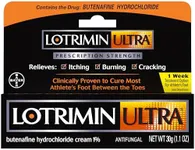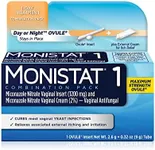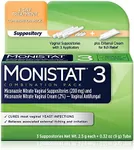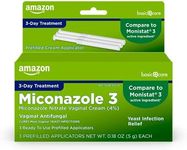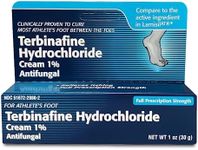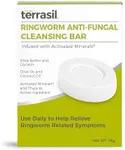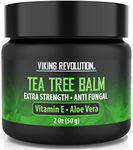Buying Guide for the Best Antifungal Creams
Choosing the right antifungal cream can be crucial for effectively treating fungal infections. These creams are used to treat a variety of fungal infections, including athlete's foot, jock itch, ringworm, and yeast infections. When selecting an antifungal cream, it's important to consider several key specifications to ensure you pick the best product for your needs. Understanding these specifications will help you make an informed decision and achieve the best possible results.Active IngredientThe active ingredient in an antifungal cream is the component that works to eliminate the fungal infection. Common active ingredients include clotrimazole, miconazole, terbinafine, and ketoconazole. Each of these ingredients targets different types of fungi and may vary in effectiveness. For example, clotrimazole and miconazole are often used for athlete's foot and jock itch, while terbinafine is known for its effectiveness against ringworm. Choosing the right active ingredient depends on the type of fungal infection you have. If you're unsure, consult a healthcare professional for guidance.
StrengthThe strength of an antifungal cream refers to the concentration of the active ingredient. This is usually indicated as a percentage on the packaging. Higher strength creams may work faster or be more effective for severe infections, but they can also cause more side effects. Lower strength creams are generally milder and may be suitable for less severe infections or for sensitive skin. Consider the severity of your infection and your skin's sensitivity when choosing the strength of the cream. If in doubt, start with a lower strength and consult a healthcare professional if needed.
FormulationAntifungal creams come in various formulations, including creams, ointments, gels, and sprays. Creams and ointments are typically more moisturizing and may be better for dry or sensitive skin. Gels and sprays can be more convenient for treating large or hard-to-reach areas. The choice of formulation depends on the location and size of the infection, as well as personal preference. For example, a spray might be easier to apply to the feet, while a cream might be more soothing for a rash on the body.
Application FrequencyThe frequency with which you need to apply the antifungal cream can vary depending on the product. Some creams require application once or twice a day, while others may need to be applied more frequently. It's important to follow the recommended application frequency to ensure the effectiveness of the treatment. Consider your daily routine and choose a product that fits easily into your schedule. Consistency is key to successfully treating a fungal infection, so pick a cream that you can use as directed without difficulty.
Duration of TreatmentThe duration of treatment with an antifungal cream can range from a few days to several weeks, depending on the severity of the infection and the specific product. Shorter treatment durations may be more convenient, but longer treatments might be necessary for more stubborn infections. It's important to complete the full course of treatment even if symptoms improve to prevent the infection from returning. Consider the recommended duration of treatment and ensure you are prepared to follow through with it to achieve the best results.
Side EffectsLike all medications, antifungal creams can have side effects, although they are generally mild. Common side effects include skin irritation, redness, and itching. Some people may be more sensitive to certain ingredients, so it's important to read the label and be aware of any potential allergens. If you have sensitive skin or a history of allergic reactions, choose a cream with fewer additives and fragrances. If you experience severe side effects, discontinue use and consult a healthcare professional.
